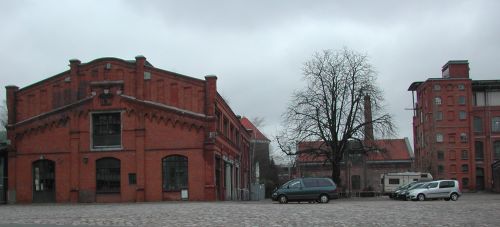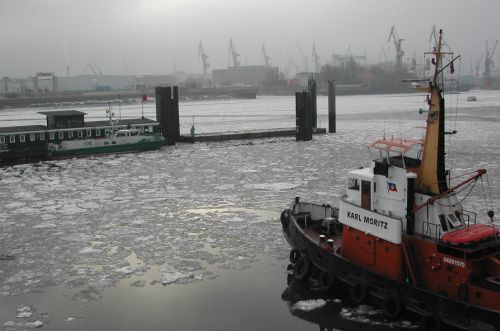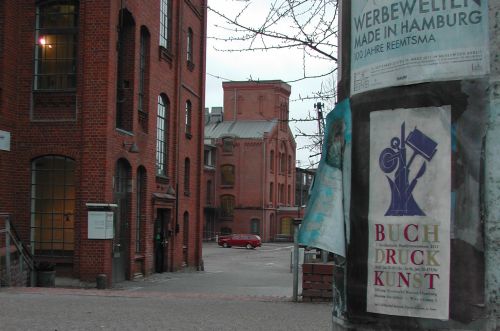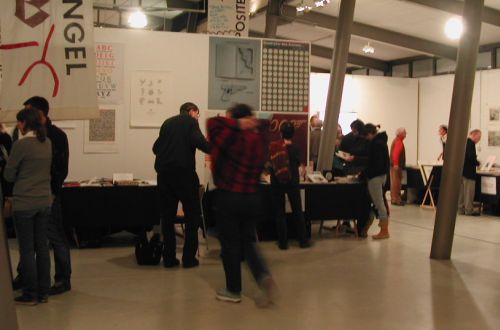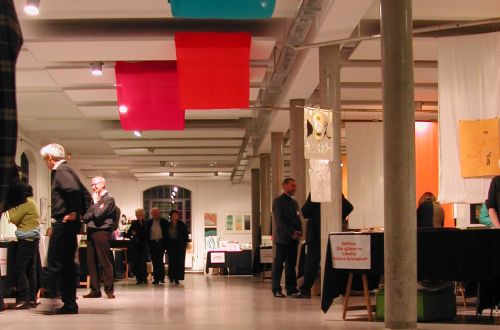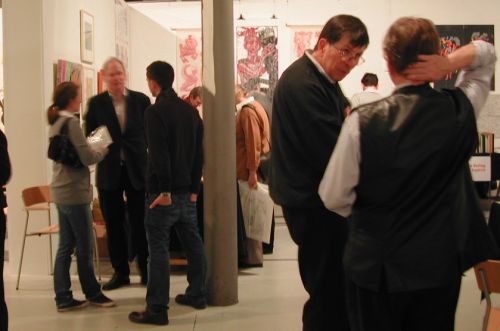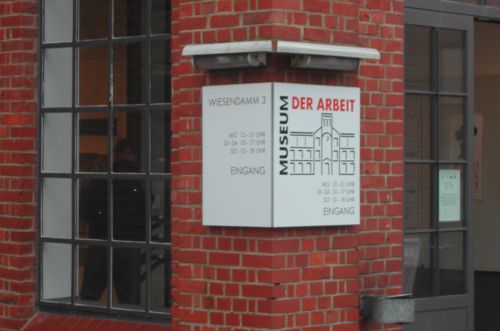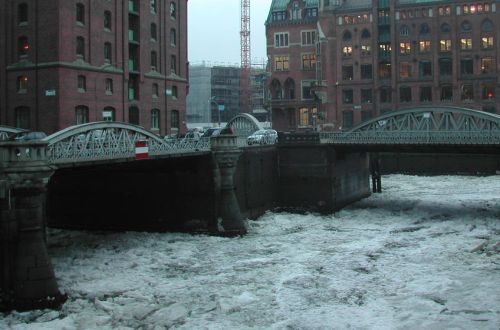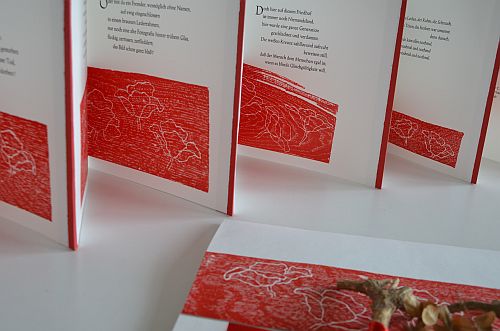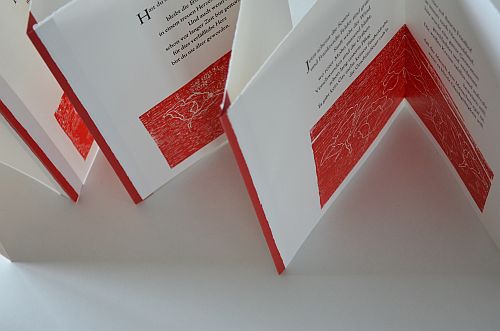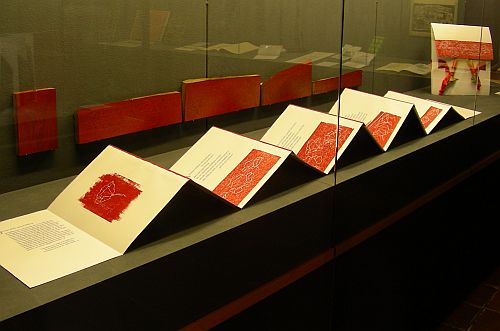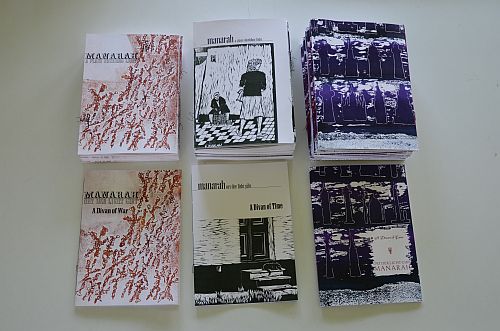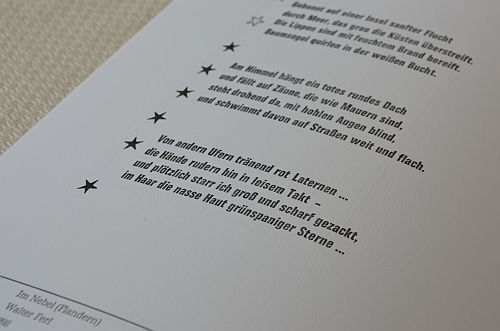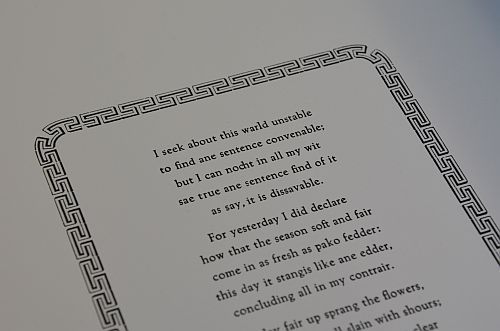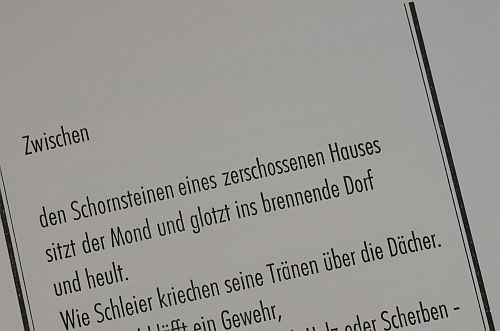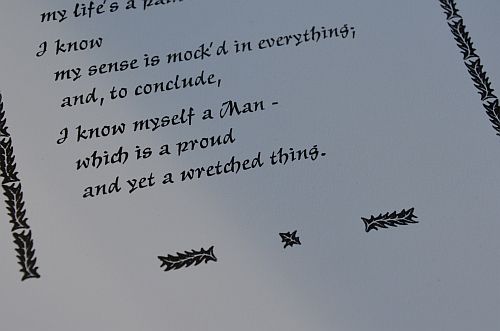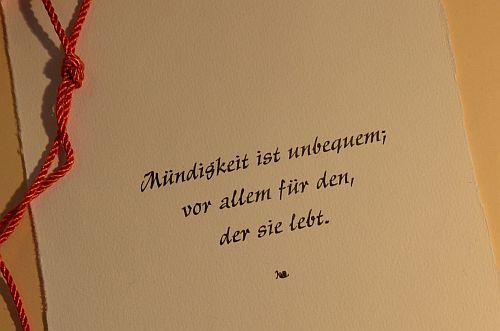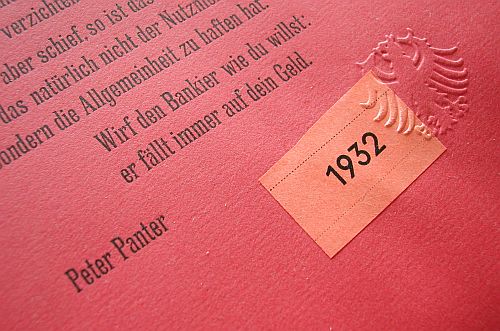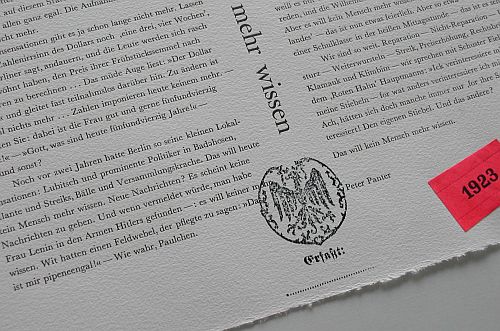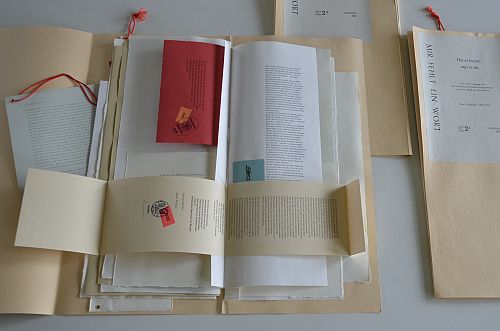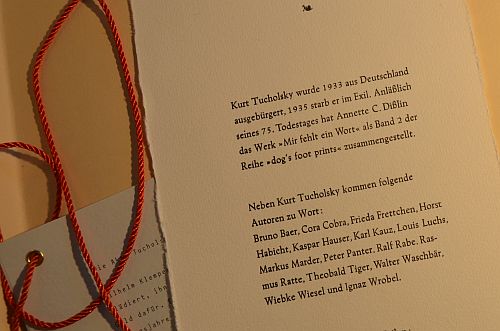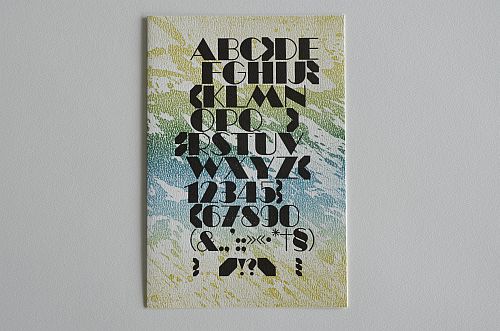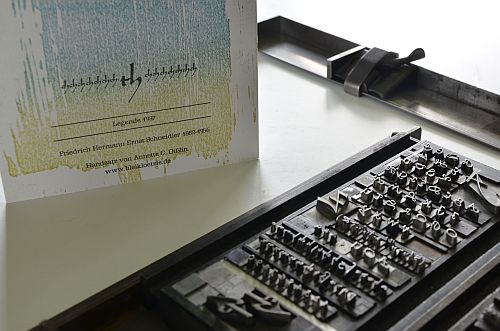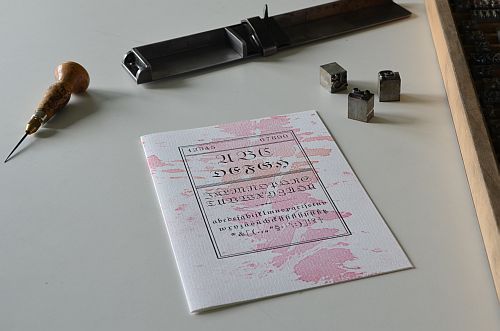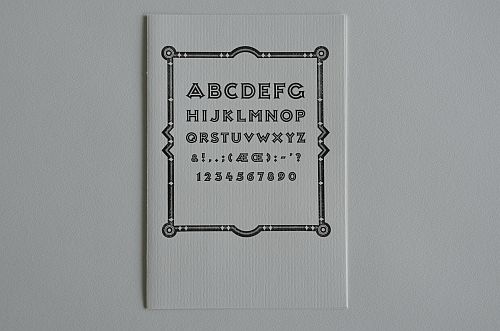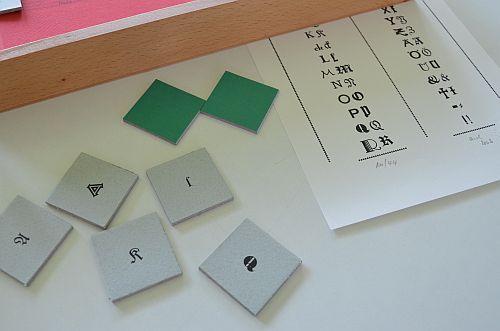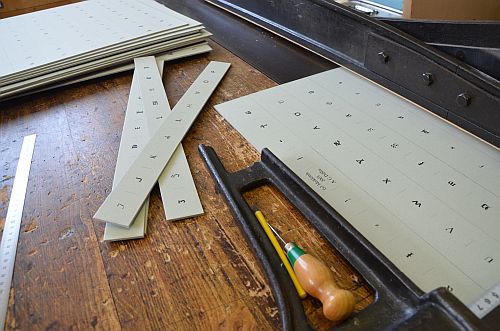If you’re interested in and love hand printed books and bookarts, then the place to go in January is to North Germany, to the ‘Museum der Arbeit’ in Hamburg-Barmbek.
Hamburg is, by itself, an excellent travel destination with all its galleries, museums, historical buildings and public events. In mid January, however, there is a special event for lovers of bookarts: On the 19th and 20th January fifty book artists and printers will gather to display their artwork in the wonderful old redbrick buildings of the former ‚New-York-Hamburger-Gummi-Waaren-Compagnie‘ rubber factory. Founded back in 1871 the factory steadily grew until it was shattered during the WW2 bombing raids. Over the years the remaining sections have been carefully refurbished and are now used as a museum to show the impact 150 years of industrialization has had on the every day life of workers and their families.
One of the many events held at the museum is the ‚Norddeutsche Handpressenmesse‘. This trade fair brings bookarts to Hamburg–Barmbek, and within walking distance from the Barmbek tube station. With this 2013 fair the schedule changes from a biennial to an annual cycle. From this year on some 50 studios from around the world as well as individual artists will be given the chance to put theirworks on show – and visitors the opportunity to browse them all and buy their favourite books.
One section of the museum houses, from former times of letterpress printing, equipment which was used in any printing office; namely different types of printing presses, a large stock of metal type and even type casting machines such as Linotype. The experienced and dedicated members of staff know how to work these machines and will demonstrate to visitors how the hard work of letterpress printing was actually done. They will be giving practical demonstrations during the 2 days of the fair. Visitors will have the possibility of not only seeing and holding the finished books, but also watching the different work procedures involved in printing and making a book.
There will be other events alongside the fair, such as an exhibition of new works by Masters of Bookbinding, Calligraphy and Lithography. Papermaker Johannes Follmer will also demonstrate the art of handmade papermaking. Follmer usually works from his family’s papermill in Triefenstein, which is not far from Heidelberg. Artists can ask him to make paper to order specified for their special printing purpose and even with an individual watermark in every sheet.
One can find all events and a complete list of exhibiting artists and studios at this link: http://www.buchdruckkunst.de
Click here to find more English language information about the ‘Museum der Arbeit’ in Hamburg-Barmbek: http://www.museum-der-arbeit.de/Museum/konzept.en.html
Find the museum’s website here: http://www.museum-der-arbeit.de
The fair in 2013 will be open
on Saturday, 19th January from 10 am to 7 pm and
on Sunday, 20th January from 10 am to 5 pm
Information to feed in your GPS:
Museum der Arbeit, Wiesendamm 3, 22305 Hamburg-Barmbek

